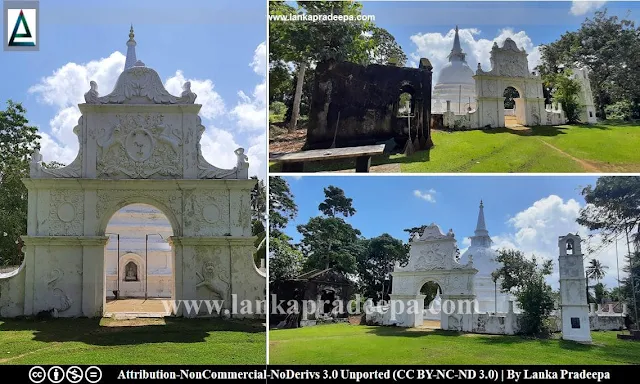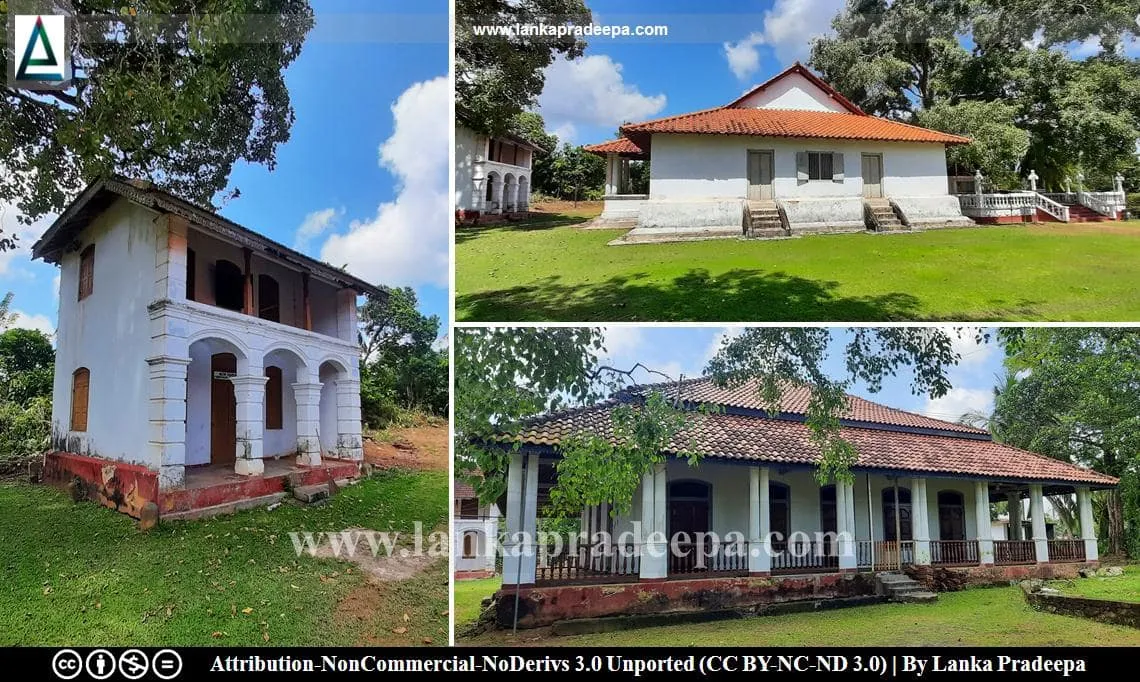
Kathaluwa Poorwarama Viharaya (Sinhala: කතළුව පූර්වාරාම විහාරය) is a Buddhist temple situated in Kathaluwa village in Galle District, Sri Lanka.
History
Locals link the history of this temple to the Anuradhapura Period (Ranchagoda, 2015). It is believed that one of the 32 saplings of Sri Maha Bodhi Tree has been planted here (Ranchagoda, 2015). However, available evidence suggests that this temple was constructed in 1840 by Kathaluwe Gunarathana Thera (Abeyawardana, 2004).
The temple
The temple consists of two terraces; the upper terrace and the lower terrace. The Stupa, image house, Bodhi tree, belfry and library is located on the upper terrace while the monks' dwelling is built on the lower terrace.
The image house

The Poorwarama temple is popular among visitors for its valuable murals housed in the image house (Ranchagoda, 2015). Although the year 1886 A.D. is mentioned above the entrance door to the image house, the technique and the details in the paintings inside indicate that they have been executed much earlier than 1886 (Abeyawardana, 2004).
The image house has been constructed on an elevated platform of about 1 m high (De Silva & Chandrasekara, 2009). The walls are of Kabok (laterite) and plastered with lime mortar (De Silva & Chandrasekara, 2009). It consists of an inner chamber, a middle chamber and an outer chamber. Seven doorways, two each on three walls and one on the front wall provide access to the outer chamber. The British crest with a portrait of Queen Victoria (1837-1901 A.D.) and the year 1886 A.D. is found painted over the main entrance to the image house. This year may indicate the date of an addition or alteration made to the original image house (Abeyawardana, 2004).

A large reclining Buddha displaying the features of the Kandyan style is found inside the inner chamber. On the sidewalls of this statue are two Buddha statues in the standing and seated positions, facing each other. The figures of Sariputta (left) and Moggallana (right), the two chief disciples of Gautama Buddha, are not found beside the Buddha statues of this image house. The figures of Arhats carrying flowers have been drawn across the back walls of these statues. The two entrances that provide access to the inner chamber have the British crest painted above and are set within the traditional Makara Thorana (the dragon arch). The walls of the middle chamber are adorned with paintings depicting the life events of the Buddha (Abeyawardana, 2004). Paintings and sculptures showing the Suvisi Vivaranaya (Buddha to be receiving the blessing from 24 previous Buddhas), Jataka stories are found on the walls of the outer chamber. The statues of 24 Buddhas have been mounted in line and are enclosed within a large glazed polished timber cabinet spanning three sidewalls (except the front wall) of the outer chamber.
Foreign elements are largely found in the paintings of this image house when compared with the other temple paintings in the region. Colonial style dresses, shoes, sunglasses, lamps, bottles, wine in stemmed glasses, horse carriages, jewellery, guns, and British flags are noticeable among the details of the paintings depicting traditional Sri Lankan Buddhist themes. Some are of the opinion that the paintings of this image house display two distinctive styles (Abeyawardana, 2004; De Silva & Chandrasekara, 2009). However, according to others, such as Abeyawardana, the style is the same but may have been executed by two artists who belonged to the same guild of painters known as Kadolgalla Sittara [(descendants of Kadolgalla painters) Abeyawardana, 2004; Ranchagoda, 2015].



.
References
1) Abeyawardana, H.A.P., 2004. Heritage of Ruhuna: Major natural, cultural and historic sites. Colombo: The Central Bank of Sri Lanka. ISBN: 955-575-073-4. pp.35-36.
2) De Silva, N.; Chandrasekara, D.P., 2009. Heritage Buildings of Sri Lanka. Colombo: The National Trust Sri Lanka, ISBN: 978-955-0093-01-4. p.65.
3) Ranchagoda, T. O., 2015. Pauranika Sthana Ha Smaraka: Galla Distrikkaya (In Sinhala). Archaeological Department of Sri Lanka. ISBN:955-9159-53-4. pp.30-32.
2) De Silva, N.; Chandrasekara, D.P., 2009. Heritage Buildings of Sri Lanka. Colombo: The National Trust Sri Lanka, ISBN: 978-955-0093-01-4. p.65.
3) Ranchagoda, T. O., 2015. Pauranika Sthana Ha Smaraka: Galla Distrikkaya (In Sinhala). Archaeological Department of Sri Lanka. ISBN:955-9159-53-4. pp.30-32.
Location Map
This page was last updated on 10 October 2023

